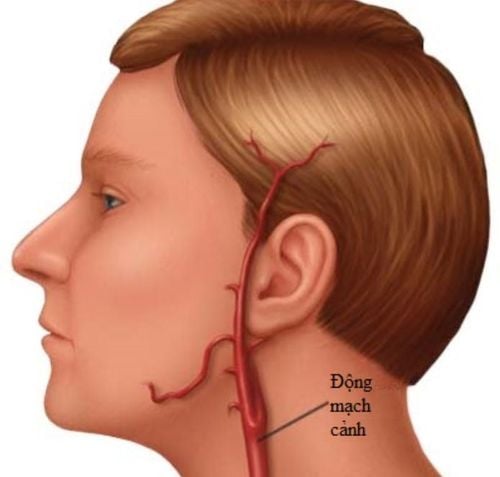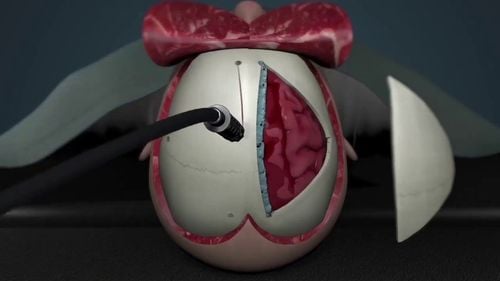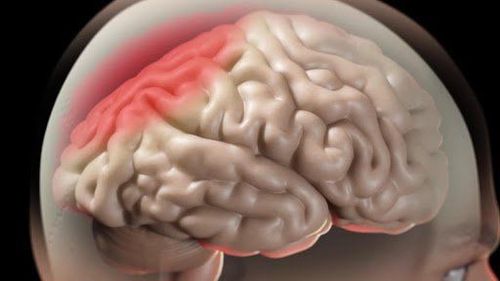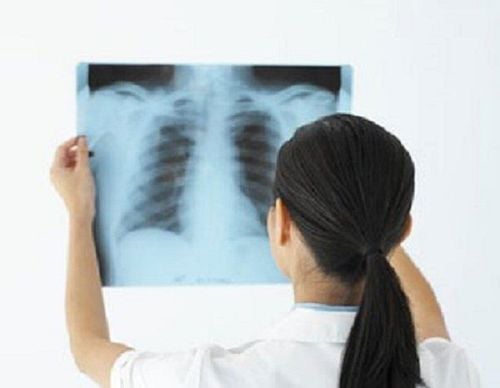This is an automatically translated article.
The article is expertly consulted by Master, Doctor Ton That Quang - Head of Anesthesia - Anesthesia Unit - Department of General Surgery - Vinmec Nha Trang International General Hospital. The doctor has more than 15 years of experience working in the Anesthesia - Resuscitation industry.Tuberculosis of the spine is an extrapulmonary tuberculosis, which is the most common disease in the locomotor system. If in the past it was an extremely difficult challenge to successfully treat this disease in Vietnam, now we can quickly detect and treat it definitively by surgery.
1. What is spinal tuberculosis?
Tuberculosis of the spine is also known as tuberculosis of the spine, mycobacterium tuberculosis is the main cause of this condition.Tuberculosis of the spine is extrapulmonary tuberculosis, and is most common in the motor systems, today, with the development of modern medicine, a cure has been found when it is detected early.
According to research, spinal tuberculosis is more common in the following groups of subjects:
Patients with pulmonary tuberculosis, lobar pneumonia, chronic pneumonia. People who have frequent contact with sick people with tuberculosis, pneumonia or chronic pneumonia. The group of subjects most often affected by this disease is between the ages of 30 and 50. Therefore, you should regularly visit and receive advice from health professionals during this period to protect your own health. The main causes of spinal tuberculosis are:
Bacteria from pulmonary tuberculosis grow, enter the bloodstream and travel to all parts of the body. Inflammatory bacteria accumulate at one site then form osteochondritis, leading to gangrene and causing tuberculosis in the lumbar spine.

2. When is spinal tuberculosis surgery?
Patients are indicated for surgery when they are in stage 1, to stage 2, and there are images on X-ray or magnetic resonance imaging, the patient is determined to be at risk of spinal cord compression or was compressed, the patient had a spinal abscess due to tuberculosis.However, it is recommended not to have surgery in cases where the patient is already at the end stage of spinal tuberculosis, the patient is no longer healthy or has systemic diseases, so he cannot participate in surgery.
3. Endotracheal anesthesia for spinal tuberculosis surgery
In general, spinal tuberculosis surgery is the same as other common spine surgery, but on the patient's body with TB. The most common position during surgery is lying on the stomach, these diseases still have the risk of spreading to the operating room environment if the patient has pulmonary tuberculosis.Anesthesia indicated in spinal tuberculosis surgery is general anesthesia and endotracheal intubation, the operation of anesthesia is similar to that of conventional surgery. However, emergency physicians need to have strategies to deal with all situations in a timely manner, especially to prevent TB infection.
Endotracheal anesthesia in spinal tuberculosis surgery is required for patients diagnosed with spinal tuberculosis and surgery is indicated.
However, there are relative contraindications to performing general endotracheal anesthesia in the following cases:
The patient does not agree or the medical center does not have adequate facilities for anesthesia and resuscitation. The operator is not proficient in professional skills.
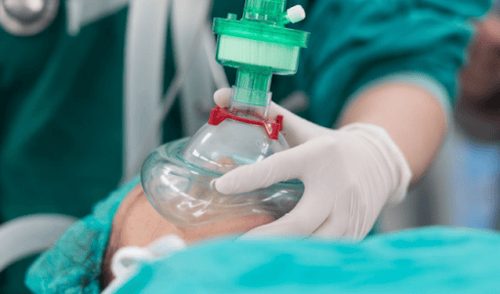
4. Steps to perform endotracheal anesthesia for spinal tuberculosis surgery
Position: patient lying supine, breathing 100% oxygen. Install the tracker. Establish an efficient transmission line. Use of pre-anesthesia (if necessary): including sleeping pills, pain relievers, and muscle relaxants. The condition for intubation is that the patient has fallen into a deep sleep and has determined enough muscle relaxation. There are two techniques for endotracheal intubation, nasal and oral. Technique for intubation through the nose:Select the side of the nasal passage and then instill a vasoconstrictor in the nose. The endotracheal tube used is usually smaller than the nasal passage, and the tube is lubricated with lidocaine ointment. Open the patient's mouth and insert the laryngoscope into the right part of the mouth, move the patient's tongue to the left to push the light deep, coordinate with the right hand to press the cricoid cartilage to find the epiglottis and glottis. In favorable cases: gently insert the endotracheal tube through the glottis and stop when the balloon has passed 2-3cm through the vocal cords. Use Magill pliers to guide the tip of the endotracheal tube into the correct glottis. Remove the laryngoscope and inflate the endotracheal tube. Check the position of the endotracheal tube through the lung and the EtCO2 result. Secure the tube with adhesive tape. Maintenance of anesthesia:
Maintain anesthesia with volatile anesthetics and intravenous anesthetics, analgesics and muscle relaxants if necessary. Good control of breathing by squeezing hands or by machine. Monitor the depth of anesthesia. Monitor vital signs. Prevent the endotracheal tube is folded, blocked. Criteria for extubation: the patient is awake and breathing spontaneously, blood pressure is stable and no related complications appear.
5. Complications and management in endotracheal anesthesia for spinal tuberculosis surgery
Reflux of gastric juice into the airway: put an endotracheal tube to drain the fluid, monitor and prevent the patient from infection. Hemodynamic disorders: treatment according to each case and cause. Intubation is not possible: improvise with difficult intubation procedures, or apply other analgesia methods. Injuries when placing tubes: bleeding, broken teeth, ... handled according to the complexity of each situation. Endotracheal anesthesia for spinal tuberculosis surgery requires emergency resuscitators to have in-depth specialized knowledge, handle situations well, and prevent the spread of TB in the surgical environment. To ensure that there are no dangerous complications during surgery, you should choose reputable medical centers.Vinmec International General Hospital is one of the hospitals that strictly applies safe surgical anesthesia practice standards according to international guidelines. Vinmec has a team of experienced anesthesiologists and nurses, modern equipment such as: nerve detectors, ultrasound machines, Karl Storz's difficult airway control system, comprehensive anesthesia monitoring system GE's AoA (Adequate of Anesthesia) including monitoring of anesthesia, pain and muscle relaxation will provide high quality and safety, helping patients to have adequate anesthesia, not wake up, and do not have residual muscle relaxants after surgery.
Vinmec Health System is also proud to be the first hospital in Vietnam to sign with the World Anesthesiology Association (WFSA) towards the goal of becoming the safest hospital for surgical anesthesia in Southeast Asia.
Please dial HOTLINE for more information or register for an appointment HERE. Download MyVinmec app to make appointments faster and to manage your bookings easily.
See more:Bone tuberculosis: Causes, symptoms, diagnosis and treatment of herniated discs Lumbar spondylosis Scoliosis






